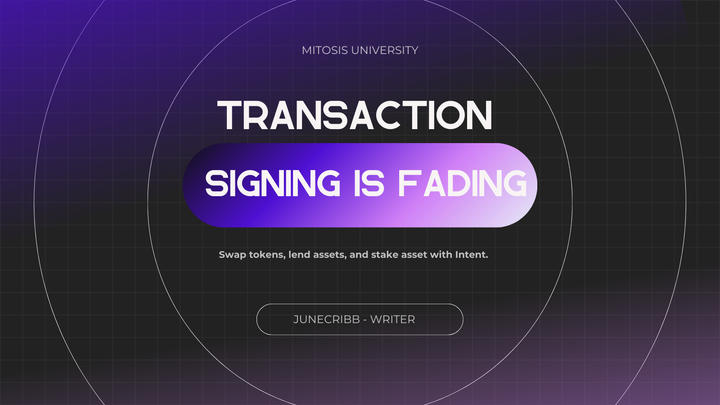Bitcoin's New Peak and Ethereum's Persistent Climb: Decoding the Crypto Market's Latest Chapter
The digital currents of finance are a relentless force, constantly testing the resilience of even the most promising assets. For Bitcoin, the pioneer, and Ethereum, the innovator, their recent journeys have been a testament to both technological evolution and the raw power of market dynamics.
Despite past skepticism and periods of intense volatility, 2025 has witnessed a remarkable resurgence, with Bitcoin soaring to new all-time highs and Ethereum experiencing powerful pumps. What complex interplay of institutional adoption, shifting supply dynamics, and evolving market sentiment has orchestrated this bullish symphony, propelling these digital giants to new valuations and reshaping the very landscape of global finance?
Bitcoin's Grand Overture: A New All-Time High
The recent surge in the cryptocurrency market has been undeniably led by Bitcoin, which capitalized on bullish momentum to jump to a new all-time high above the $111,000 mark. This premier cryptocurrency's performance in the second quarter of 2025 stands in stark contrast to its struggles in the first quarter, signaling a significant shift in investor confidence.
This powerful ascent by Bitcoin often acts as a bellwether for the broader crypto market, pulling altcoins, including Ethereum, along in its wake. However, the underlying drivers of this surge reveal a more nuanced story than simple market enthusiasm, pointing to a foundational shift in who is buying.
The Quiet Strength of US Investors: A Persistent Premium
A fundamental force behind both Bitcoin and Ethereum's recent resilience has been the sustained buying activity from United States investors. On-chain analysis reveals that the Coinbase Premium Index has remained in positive territory for a remarkable 47-day streak since May 9, 2024.
This consistent premium indicates that US institutional investors and Bitcoin & Ethereum ETF investors (excluding Fidelity) have been making heavy purchases through Coinbase. This sustained demand from a key demographic has allowed both Bitcoin and Ethereum prices to weather brewing market uncertainty, including escalating tensions between Israel and Iran, demonstrating a powerful localized influence on global asset prices. This institutional embrace has been significantly amplified by a new, regulated investment vehicle.
ETFs: The Institutional Gateway Swings Open
The approval of Bitcoin Exchange-Traded Funds (ETFs) has been a game-changer, ushering in a new era of institutional participation. These ETFs have driven record inflows into the Bitcoin market, reflecting a growing confidence among traditional investors.
For instance, BlackRock continued to dominate ETF holdings, amassing approximately 580,430 BTC by April 2025. This influx of regulated capital from institutional players has not only legitimized Bitcoin as a mainstream asset but also provided a robust demand floor, contributing significantly to its recent all-time high. The success of these Bitcoin ETFs has also paved the way for similar products for Ethereum, further fueling its own price action.
Ethereum's Own Dance: A Catch-Up Rally
While Bitcoin led the charge, Ethereum has also experienced a significant rally, often playing catch-up to its larger counterpart. ETH surged 45% over 30 days in May 2025, notably outpacing Bitcoin's 13% gain during the same period. This strong performance has been driven by a confluence of factors, including institutional capital pouring into spot ETH ETFs and explosive growth in its restaking protocols.
Despite this impressive rally, Ethereum's price currently hovers around $2,400 to $2,700 in June 2025, still significantly below its all-time high of over $4,800 from November 2021. This suggests that while bullish sentiment is strong, ETH faces unique supply and demand dynamics that influence its ability to sustain higher valuations.
The Scarcity Equation: ETH's Deflationary Heartbeat
Ethereum's unique supply mechanisms play a crucial role in its price trajectory, creating a fascinating interplay of scarcity and availability.
EIP-1559's Burning Touch
Since the implementation of EIP-1559 in August 2021, a portion of Ethereum's transaction fees (the base fee) is burned rather than paid to validators. This burning mechanism effectively reduces the circulating supply of ETH, creating a deflationary pressure during periods of high network activity.
While new ETH is continuously issued through validator rewards, the net effect on circulating supply depends on the balance between this issuance and the amount of ETH burned. This dynamic ensures that ETH's supply is constantly adjusting, influencing its scarcity and, consequently, its market value.
Staking's Long-Term Commitment
Beyond the burning mechanism, Ethereum's transition to Proof-of-Stake (PoS) has introduced another significant factor impacting its circulating supply: staking. As of June 2025, over(https://www.ainvest.com/news/ethereum-staking-surges-30-35-2-million-eth-locked-2506/) on the Ethereum network, representing nearly 30% of its total circulating supply.
This substantial amount of locked ETH directly affects the float available in the open market, reducing sell pressure and strengthening Ethereum's long-term fundamentals. This continuous reduction in available supply, driven by both individual stakers and institutional interest, creates a powerful underlying support for ETH's price.
Ecosystem Strength: Utility and Scalability
Ethereum's enduring strength is deeply rooted in its vibrant ecosystem, particularly its dominance in decentralized finance (DeFi) and the rapid expansion of its Layer 2 solutions.
DeFi's Unwavering Core: A Hub of Innovation
Ethereum continues to be the undisputed leader in the decentralized finance (DeFi) space, holding a dominant share of the Total Value Locked (TVL) across all protocols. By April 2025, Ethereum's total TVL had reached $46.293 billion, representing over 53% of global DeFi TVL.
This robust ecosystem, encompassing lending, liquid staking, and decentralized exchanges, underpins a significant portion of ETH's utility and demand. The growth in restaking protocols like Lido and EigenLayer, which reported TVL increases of 41% to 63% in May 2025, further solidifies Ethereum's position as a hub for yield generation and financial innovation.
Layer 2's Expanding Reach: Building the Express Lanes
Ethereum's scalability challenges have long been a point of contention, leading to high gas fees and network congestion. However, the rapid adoption and development of Layer 2 (L2) scaling solutions, such as Arbitrum and Optimism, are significantly improving network efficiency.
These L2s have seen activity spike by 75% over the past week, enabling faster and cheaper transactions. The successful Dencun upgrade in March 2025 further enhanced scalability, and future upgrades like EIP-7732 could boost throughput to 100K transactions per second. While L2s reduce the direct demand for ETH as gas on the mainnet, they expand Ethereum's overall utility and accessibility, attracting more users and developers to the broader ecosystem.
The Regulatory Embrace: A Seal of Legitimacy
The regulatory landscape has played a pivotal role in shaping institutional confidence in Ethereum. The SEC's landmark approval of(https://www.binance.com/en/square/post/25363465457266) was a game-changer, signaling stronger confidence in Ethereum's legitimacy and paving the way for significant institutional capital inflows. These ETFs have driven record inflows, with Ether (ETH) surging 45% over 30 days in May 2025, outpacing Bitcoin's 13% gain.
Furthermore, the Trump administration's crypto-friendly stance and ongoing legislative efforts, such as the GENIUS Act for stablecoins, are creating a more permissive environment for digital assets. This regulatory clarity and institutional interest are crucial for long-term price appreciation, as they bring more traditional capital into the ecosystem.
Geopolitical Resilience: Weathering Global Storms
Despite the inherent volatility of risk assets, both Bitcoin and Ethereum have demonstrated a surprising degree of resilience in the face of recent geopolitical tensions. Following U.S. airstrikes on Iranian nuclear facilities in mid-June 2025, Bitcoin initially saw a modest 1.27% dip before quickly rebounding above the $100,000 mark.
Ethereum, while experiencing a more pronounced 9% decline in the immediate aftermath, also showed signs of recovery. This behavior suggests a maturing market that absorbs geopolitical shocks without succumbing to panic selling or extreme volatility, reinforcing the narrative of digital assets as potential uncorrelated hedges in systemic uncertainty.
The Altcoin Conundrum: Beyond Bitcoin's Shadow
Despite Ethereum's impressive individual pumps, the broader "altcoin season"—where altcoins significantly outperform Bitcoin—remains elusive. Bitcoin's market dominance has remained elevated, closing the week at approximately 66% in late June 2025.
This strong dominance means that Bitcoin's price movements often dictate the broader market trend, making it challenging for ETH to chart an independent, sustained rally above certain thresholds. Furthermore, data from Dune Analytics shows that the number of unique crypto tokens has surged nearly 10x over the past three years across major blockchains, potentially stalling capital rotation into smaller altcoins and preventing a widespread "rising tide lifts all boats" phenomenon.
The Human Element: Sentiment, Whales, and Volatility
Beyond technical and fundamental factors, market sentiment and the actions of large investors ("whales") play a crucial role in ETH's price action. The crypto market is highly susceptible to "fear of missing out" (FOMO) during pumps and panic selling during dips. While institutional investors are increasingly active, their inflows can also be volatile, leading to rapid shifts in market dynamics. Whales, for instance, have shown unprecedented levels of accumulation, adding on average 800K ETH per day for a week, while only 16K new ETH are produced each week.
This significant imbalance in accumulation versus new supply highlights the powerful influence of large holders. However, the ZKJ token's sharp drop in June 2025, triggered by sudden whale sell-offs and shallow liquidity, serves as a stark reminder of how quickly market sentiment can turn, leading to cascading liquidations and preventing sustained upward momentum.
Conclusion: A Complex Interplay of Factors
Ethereum's journey to consistently surpass and sustain higher price points is a complex narrative woven from technological innovation, market structure, macroeconomic forces, and human psychology. While its robust ecosystem, deflationary mechanisms, growing staking participation, and leading position in DeFi provide a strong foundation, these strengths are constantly tested by fierce competition, the volatility of the broader crypto market, and the unpredictable nature of global events. The approval of ETH ETFs and a more favorable regulatory environment offer significant tailwinds, yet the market's inherent tendency for profit-taking and its susceptibility to external shocks often create resistance. Ultimately, ETH's path to new all-time highs will depend on its ability to not only continue innovating but also to navigate these multifaceted challenges, proving its long-term value and resilience in an ever-evolving digital financial landscape.
Refer To:
🔗Links:



Comments ()